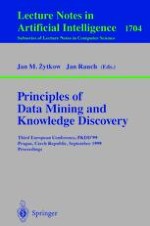1999 | Book
Principles of Data Mining and Knowledge Discovery
Third European Conference, PKDD’99, Prague, Czech Republic, September 15-18, 1999. Proceedings
Editors: Jan M. Żytkow, Jan Rauch
Publisher: Springer Berlin Heidelberg
Book Series : Lecture Notes in Computer Science
Included in: Professional Book Archive
